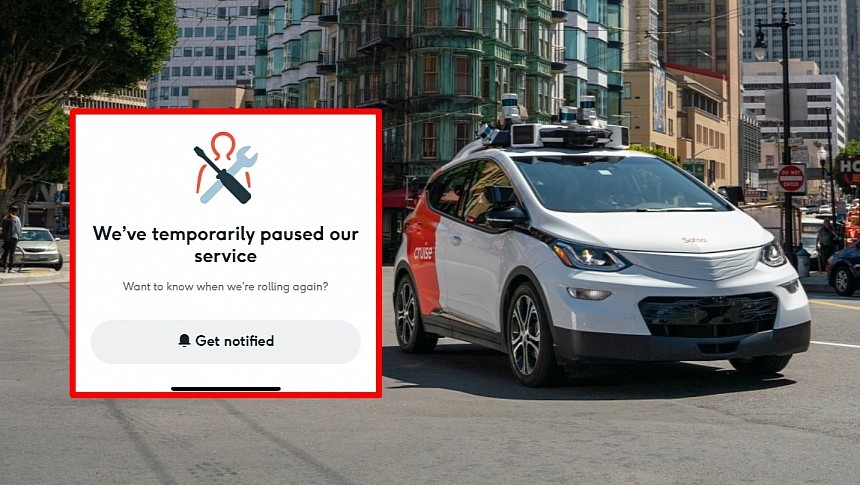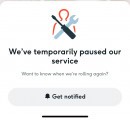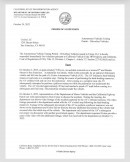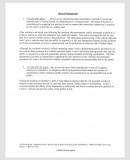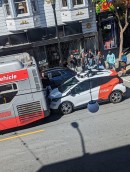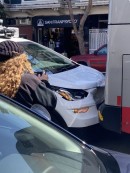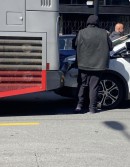California DMV suspended the Cruise robotaxi service in San Francisco after it deemed the service "not safe for the public's operation." The GM-backed startup is accused of withholding a key part of a video following a horrific car crash in San Francisco. Cruise can still operate its ride-hailing service in California, but only with a human safety driver behind the wheel.
The automotive industry has been trying to advance autonomous driving for more than a decade. The benefit of driverless cars could be enormous if done right, dramatically reducing the number of crashes caused by driver errors. The competition in the autonomous driving sector has heated up in the past years, with robotaxi companies like Cruise and Waymo at the forefront of this technology. Like any emergent technology, autonomous driving has not been without pain.
Even though the number of incidents and crashes caused by driverless cars has been small, they have caused a massive backlash. Cruise, an autonomous driving startup backed and now owned by GM, knows that very well. The company has been the first to be awarded a commercial license in San Francisco and has been aggressively expanding to other cities. But Cruise operations have always been controversial, with many pointing fingers at its questionable safety culture.
Most incidents involving Cruise robotaxis have been minor, but the one that happened on October 2 in San Francisco was nothing but. According to eyewitnesses, a woman was crossing the intersection of Market and 5th streets when she was struck by a car whose driver fled the scene. The impact threw her into the path of a Cruise robotaxi driving in the adjacent lane, causing it to run her over. The robotaxi came to a halt, but unfortunately, the woman got caught under the rear axle with a tire over her leg.
This was the most severe accident involving Cruise robotaxis after the company cut its operating fleet in half after a series of accidents that put it under scrutiny. Although Cruise argued that its robotaxi did not cause the accident, how it behaved during and after the accident has been closely scrutinized. The investigation now threatens to derail Cruise's plans, possibly leading to its demise.
More specifically, the agency said the video from the Cruise on-board cameras offered to investigators had been edited. It showed the pedestrian falling from the hood of the other car and into the path of the Cruise robotaxi, ending after the vehicle stopped on top of the victim. What the video omitted was what happened next. After stopping, the car started moving again and traveled another 20 feet (6 meters) at a speed of 7 mph (12 kph), dragging the pedestrian with it and causing further injuries.
Cruise never disclosed the subsequent movement of the car to the DMV, but the investigators learned of the vehicle's complete actions after receiving information from another governmental agency. The DMV then asked Cruise for the full video, which it provided on October 13, almost two weeks after the accident. The vehicle's performance during the accident and Cruise's misrepresentation of facts have prompted the DMV to suspend the company's driverless permits.
Following the suspension order, Cruise paused driverless operation in San Francisco. It can still operate with human safety drivers aboard its vehicles, although it's unclear whether it will continue to offer commercial services under the circumstances. The DMV has outlined the necessary steps that Cruise must complete before it can apply for reinstatement, although the agency did not publicly elaborate on those steps.
With unsustainable losses and no chance of making profits in the foreseeable future, the future of Cruise's robotaxi service is uncertain. Its parent company, GM, is already facing tough decisions in light of the UAW strikes and the delays of its EV program. It's unclear for how long GM will be able to sustain the heavy losses at Cruise.
Despite impressive financial results in the third quarter, the economic prospects are darkening, which might prompt cost-cutting measures across the board. GM put its entire EV program on the back burner, so I don't think Cruise will be any luckier. Since 2016, GM reported $8.4 billion in cumulative operating losses from Cruise, which means the robotaxi service is now its biggest liability.
Even though the number of incidents and crashes caused by driverless cars has been small, they have caused a massive backlash. Cruise, an autonomous driving startup backed and now owned by GM, knows that very well. The company has been the first to be awarded a commercial license in San Francisco and has been aggressively expanding to other cities. But Cruise operations have always been controversial, with many pointing fingers at its questionable safety culture.
Most incidents involving Cruise robotaxis have been minor, but the one that happened on October 2 in San Francisco was nothing but. According to eyewitnesses, a woman was crossing the intersection of Market and 5th streets when she was struck by a car whose driver fled the scene. The impact threw her into the path of a Cruise robotaxi driving in the adjacent lane, causing it to run her over. The robotaxi came to a halt, but unfortunately, the woman got caught under the rear axle with a tire over her leg.
This was the most severe accident involving Cruise robotaxis after the company cut its operating fleet in half after a series of accidents that put it under scrutiny. Although Cruise argued that its robotaxi did not cause the accident, how it behaved during and after the accident has been closely scrutinized. The investigation now threatens to derail Cruise's plans, possibly leading to its demise.
Cruise withheld key safety information from investigators
On Tuesday, California DMV suspended Cruise's driverless permits after determining that its robotaxis pose an "unreasonable risk" to public safety. The decision comes months after state regulators started investigating "concerning incidents" involving Cruise robotaxis in San Francisco. The October 2 accident and how Cruise handled it have probably sealed its fate in California. Cruise has been accused of "misrepresenting" and "omitting" critical safety information from the investigators.More specifically, the agency said the video from the Cruise on-board cameras offered to investigators had been edited. It showed the pedestrian falling from the hood of the other car and into the path of the Cruise robotaxi, ending after the vehicle stopped on top of the victim. What the video omitted was what happened next. After stopping, the car started moving again and traveled another 20 feet (6 meters) at a speed of 7 mph (12 kph), dragging the pedestrian with it and causing further injuries.
Cruise never disclosed the subsequent movement of the car to the DMV, but the investigators learned of the vehicle's complete actions after receiving information from another governmental agency. The DMV then asked Cruise for the full video, which it provided on October 13, almost two weeks after the accident. The vehicle's performance during the accident and Cruise's misrepresentation of facts have prompted the DMV to suspend the company's driverless permits.
Following the suspension order, Cruise paused driverless operation in San Francisco. It can still operate with human safety drivers aboard its vehicles, although it's unclear whether it will continue to offer commercial services under the circumstances. The DMV has outlined the necessary steps that Cruise must complete before it can apply for reinstatement, although the agency did not publicly elaborate on those steps.
Unsustainable losses: Is Cruise's future sealed?
The suspension dealt a heavy blow to Cruise's efforts as it tried to scale robotaxi operations to more cities in the US and beyond. Cruise is burning money at an alarming rate, and the trend has been accelerating instead of subsiding. In the first nine months of 2023, Cruise's losses have already surpassed the entire 2022, at $1.9 billion compared to $1.89 billion. The AV startup lost $732 million in the third quarter alone. At this rate, the company is on track to lose $3 billion in 2024, although it might run out of money long before that.With unsustainable losses and no chance of making profits in the foreseeable future, the future of Cruise's robotaxi service is uncertain. Its parent company, GM, is already facing tough decisions in light of the UAW strikes and the delays of its EV program. It's unclear for how long GM will be able to sustain the heavy losses at Cruise.
Despite impressive financial results in the third quarter, the economic prospects are darkening, which might prompt cost-cutting measures across the board. GM put its entire EV program on the back burner, so I don't think Cruise will be any luckier. Since 2016, GM reported $8.4 billion in cumulative operating losses from Cruise, which means the robotaxi service is now its biggest liability.
